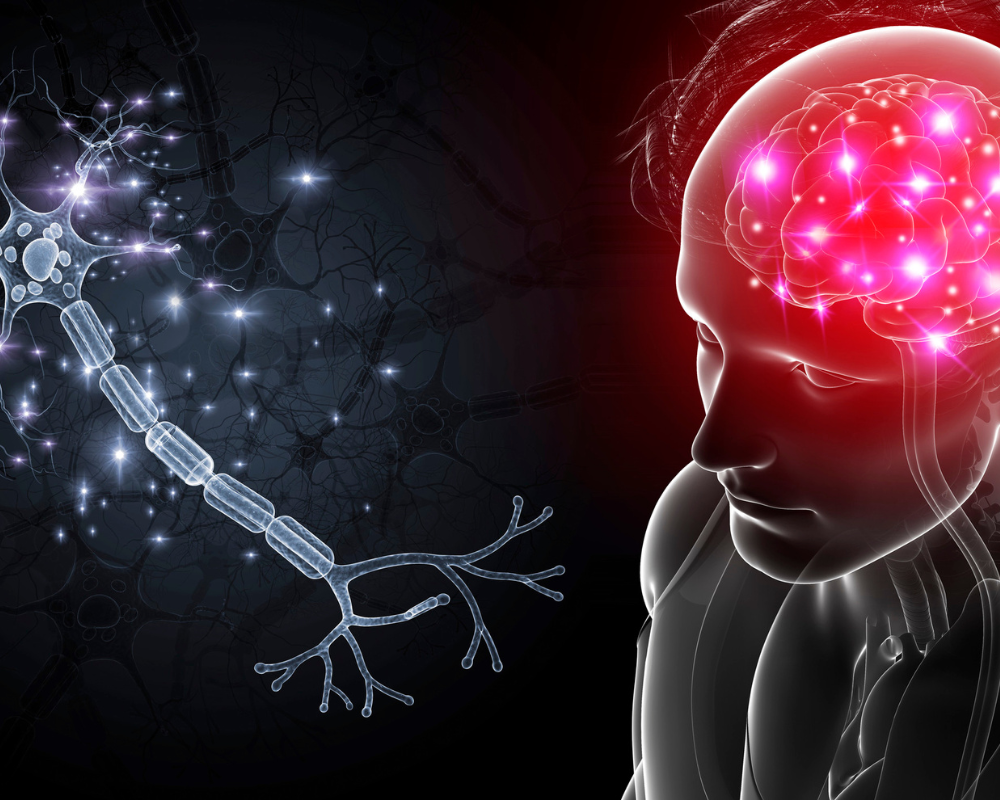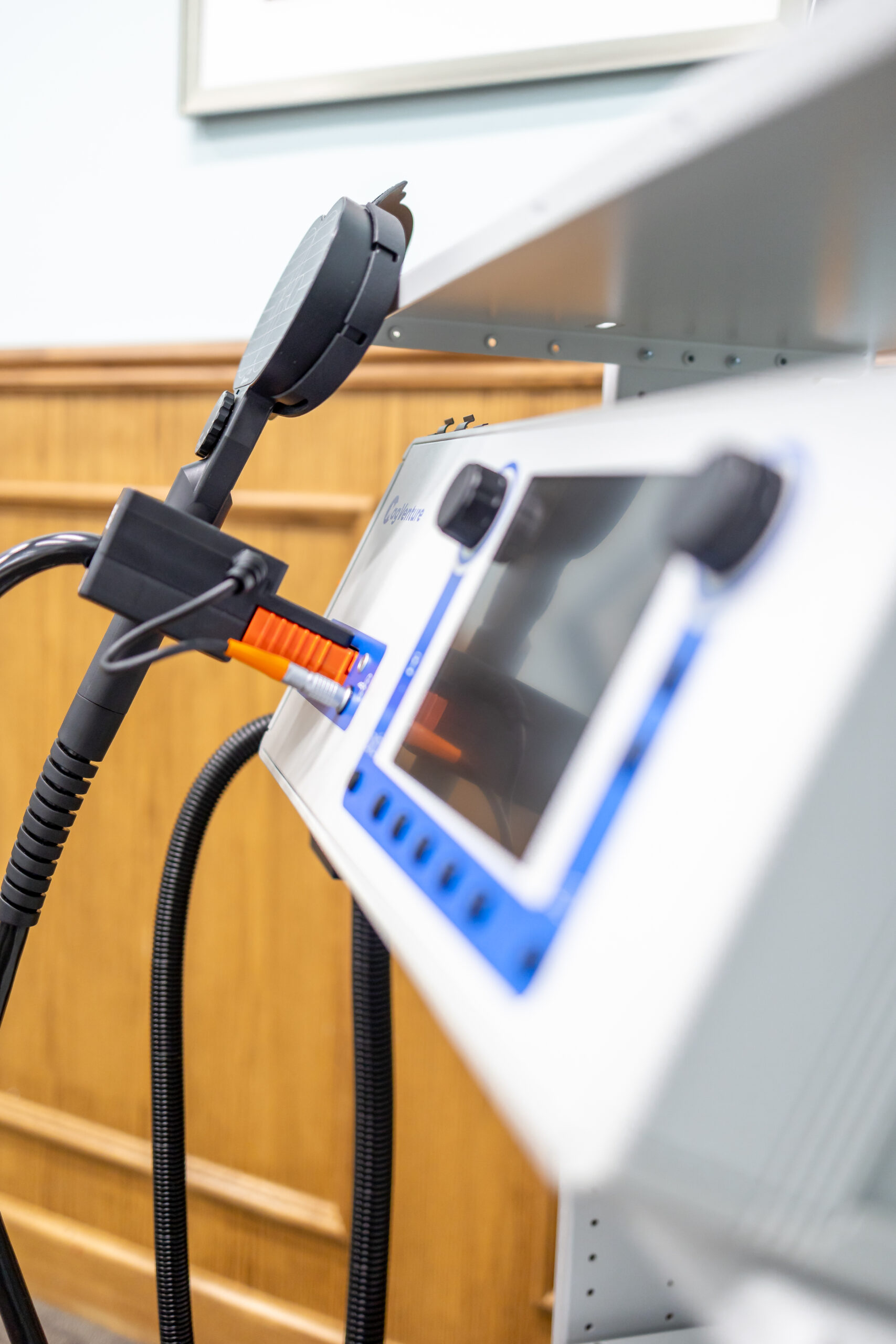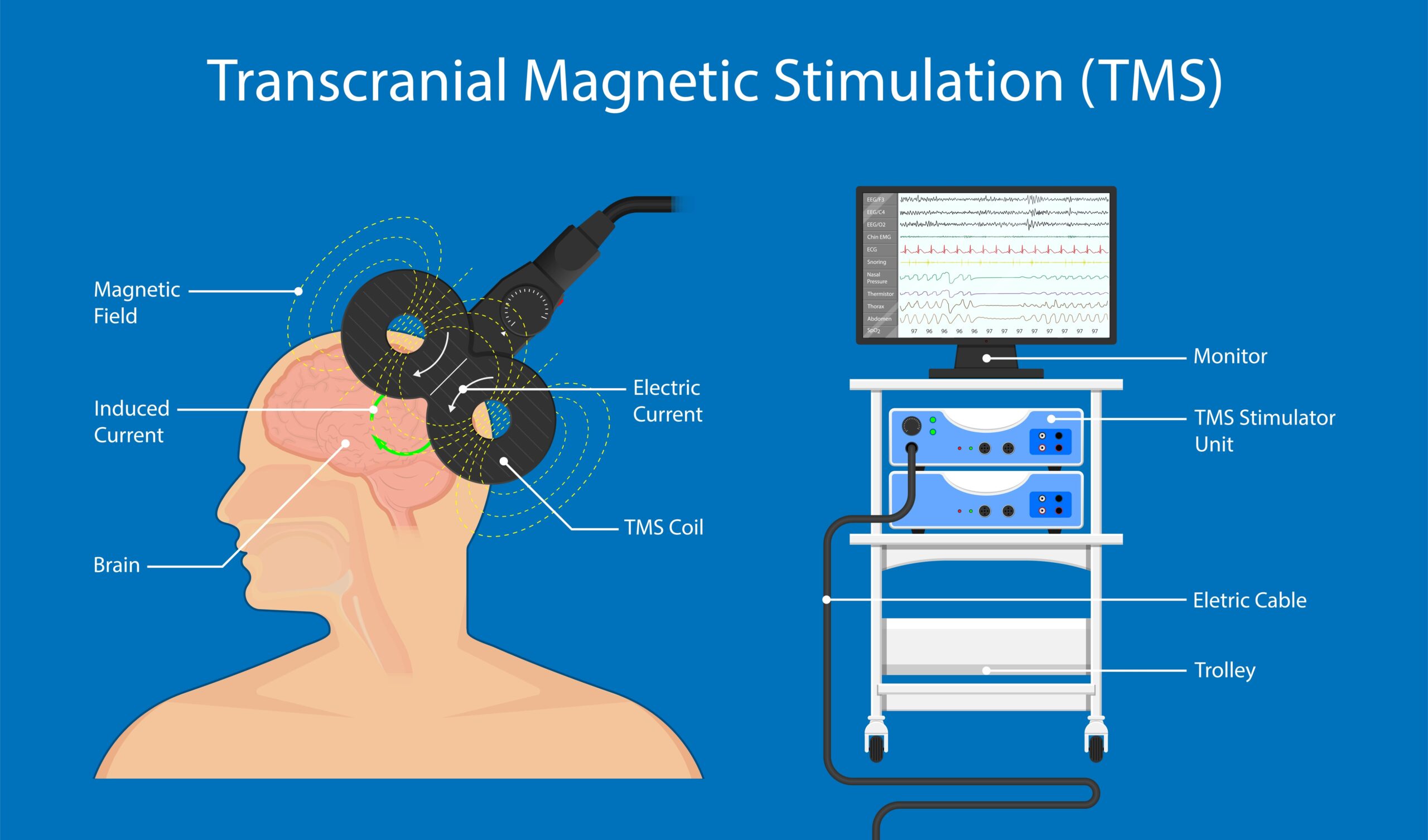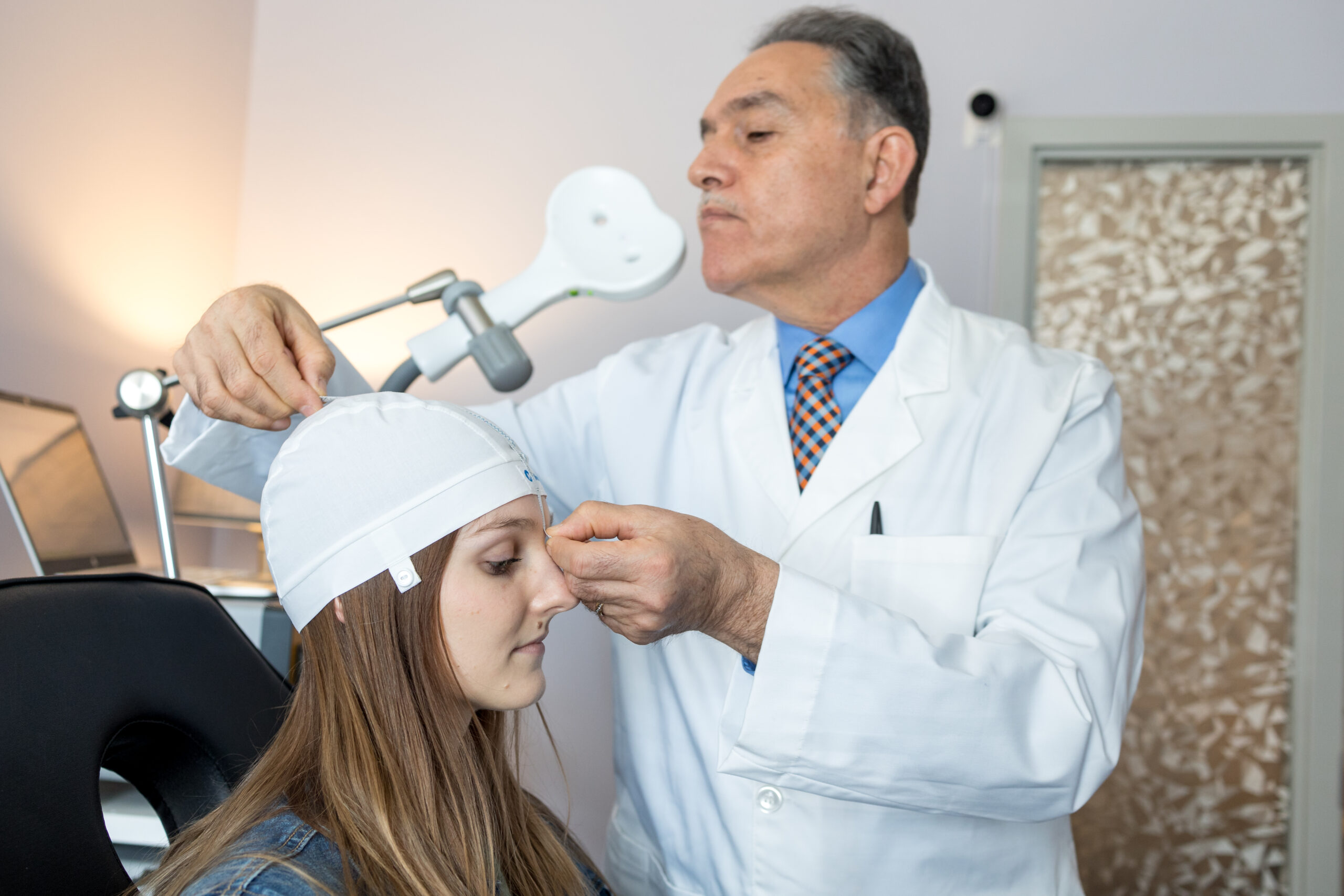We put this quick overview together for those seeking a straightforward understanding of how Transcranial Magnetic Stimulation (TMS) influences their brain, without the complexity of electromagnetism or extensive discourse on neurology and psychiatry. We will provide a concise overview of TMS’s functioning, its impact on the brain, and its beneficial role in addressing depression.
Electrical Currents: The Driving Force
One of the fundamental ways TMS therapy works is by inducing electrical currents in neurons. Applying a magnetic field to the brain spurs a flow of electrical current in targeted neurons. This current makes the neurons more active, leading to changes in brain activity that can offer therapeutic benefits.
These TMS-induced electrical currents are thought to mimic the naturally produced electrical signals by neurons in our brain. Hence, TMS therapy can control the activity of neurons in a targeted brain area through magnetic fields.
What are Neurons?

Neurons, the extraordinary nerve cells, command the fundamental functions of the nervous system. They are ceaselessly sending messages across the body, making everything possible from essential functions like breathing to intricate processes like thinking. These entities are not only the basic units but also the relentless couriers of information throughout the human body. Now, let’s break down the impressive operations of neurons in the brain:
- Excitability: Neurons showcase remarkable excitability. They generate what are known as action potentials or nerve impulses. These impulses are not just electric sparks; they are the fundamental currency of the brain. By enabling communication between neurons and allowing computations to occur, they permit the crucial processing of information.
- Communication: With a finesse in using both electrical and chemical signals, neurons can relay information between different regions of the brain, and between the brain, the spinal cord, and the entire body. They are constantly receiving hundreds of inputs on their dendrites and cell body, which flux in an ever-changing pattern, hinging on the current thoughts of the brain. Through this complex process of synaptic integration, a neuron’s activity is determined.
- Neurotransmitters: Neurons exhibit versatility in releasing various neurotransmitters, chemical couriers that bridge the information gap between brain cells. A fascinating aspect is that several different subclasses of neurons may employ the same transmitter.
- Structure: The structural design of a neuron is ingenious. It includes a cell body housing the nucleus, dendrites that welcome diverse signals through receptors or gap junctions, axons that carry forward action potentials ignited by signals from the dendrites, and myelin sheaths adorning the axon to speed up the propagation of action potentials.
- Function: Depending on its locale, a neuron can play the role of a sensory neuron, a motor neuron, or an interneuron, broadcasting and receiving specific neurotransmitters.
Neurons aren’t just nerve cells; they are the indomitable information messengers employing electrical and chemical signals to convey information between various regions of the brain and throughout the body.
Modulating Neuronal Excitability
A crucial aspect of TMS therapy is its ability to alter the excitability of neurons. The neurons in our brain can vary in excitability, influenced by several factors like size, shape, and location. TMS therapy applies a magnetic field to the brain, altering the excitability of neurons in a specific area and subsequently leading to changes in brain activity.
This change in excitability is linked to alterations in the balance of inhibitory and excitatory signals in the brain. Inhibitory signals decrease neuronal activity, while excitatory signals enhance it. By modifying this balance, TMS therapy can manipulate the activity of neurons in specific brain regions.
Here is how TMS therapy alters the excitability of neurons:
- Modulation of neuronal excitability: TMS, or Transcranial Magnetic Stimulation, can temporarily adjust neuronal excitability. This means it can elevate or diminish the activity of neurons. Low-frequency rTMS has the knack for reducing neuronal excitability, while high-frequency rTMS takes on the role of increasing cortical excitability. This translates to TMS being employed to either step up or tone down the activity of specific brain regions, contingent on the stimulation’s frequency.
- Long-lasting effects: TMS isn’t just a temporary solution. It has demonstrated sustained effects on the excitability and discharge of neurons. This leads us to consider that low-intensity TMS can exert long-term effects on cortical neuron excitability and activity.
- Excitation and inhibition: TMS doesn’t follow a simple path when it comes to inducing activity in neurons. It sparks off a complex dance of activity in neurons, including an initial short-latency excitation, a follow-up of temporary inhibition, and then a second excitatory phase. This intricate pattern of excitation-inhibition-excitation can be seen when TMS is applied in any trial epoch.
TMS therapy works by altering the excitability of neurons, modulating their activity, and triggering a complex pattern of excitation and inhibition. The enduring effects of TMS on cortical neuron excitability and activity render it a promising therapeutic path for a range of neurological and psychiatric diseases.
Impact on Neurotransmitters
Several theories propose that TMS therapy might influence neurotransmitters in the brain. Neurotransmitters are chemicals released by neurons that facilitate signal transmission between them. Studies suggest that TMS therapy may modulate levels of neurotransmitters like serotonin and dopamine, both vital in mood regulation.
According to a review article, TMS signals stimulate and induce gene expression and enhance the production of a number of enzymes, which likely underlie the long-lasting duration of the neuromodulatory effects of TMS. Additionally, a few studies have examined the effects of rTMS on neurotransmitter systems in major depression, and some authors suggested that a possible working mechanism of action could be by activating the dopaminergic system. Furthermore, TMS has been shown to boost the release of neurotransmitters, including dopamine, norepinephrine, and serotonin, that can improve and modulate the activity of neurons. These findings suggest that TMS therapy may modulate neurotransmitters (like serotonin and dopamine) levels, which could contribute to its therapeutic effects on various neurological and psychiatric diseases.
Challenges and Future Directions
Studying the science behind TMS therapy presents its own set of challenges. For instance, measuring the effects of magnetic fields on the brain can be tough. Techniques like electroencephalography (EEG) and functional magnetic resonance imaging (fMRI) can capture changes in brain activity. Still, they may not always be sensitive enough to detect the subtle shifts induced by TMS.
Despite these hurdles, researchers have been relentless in investigating TMS therapy. The goal is to better understand its working and explore its potential to treat an even broader spectrum of conditions. This makes TMS therapy an incredibly exciting and promising area of research within the realm of neuroscience.
Sources:
Brain Basics: Life and Death of a Neuron
Medical News Today: What Are Neurons?
Queensland Brain Institute: How do Neurons Work?
The Scientist: How Do Neurons Work?
ScienceDirect: Transcranial Magnetic Stimulation
Frontiers in Human Neuroscience: Modulating Brain Networks with Transcranial Magnetic Stimulation
Institut du Cerveau: Transcranial Magnetic Stimulation, What Happens in the Brain?
PsyFitMS: How Transcranial Magnetic Stimulation Affects the Brain
Nature: Online Transcranial Magnetic Stimulation Protocol for Measuring Cortical Physiology
PMC: The Role of the Frontal Cortex in the Mouse in Spatial Working Memory
Bowman Medical Group: How TMS Rewires Your Brain
For more information about TMS, our research and what we do at Palmiertms, visit our blog page below





